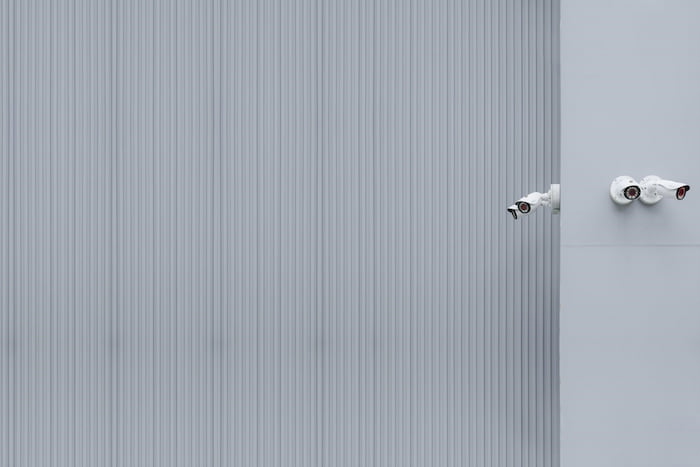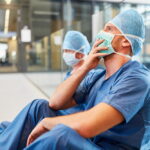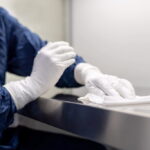Healthcare facilities are increasingly leveraging surveillance technology to improve patient safety and care. With the right solutions, policymakers in hospitals can reveal potential problems before they become serious issues, ensure that medical staff adhere to protocols, and help identify any lapses in standards of care. From motion-detection cameras in operating theatres to thermal mapping cameras for detecting potential contamination risks, a wide range of video surveillance technologies can be implemented to enhance safety and care policies in healthcare facilities.
Here, we will evaluate the importance of patient safety and care, how video surveillance technology can support it, the best practices for implementation in healthcare facilities, and how clinics and hospitals can apply them.
Importance of Patient Safety and Care
Patient safety and care are critical components of modern healthcare, and professionals across every department know the implications of providing inadequate or insufficient care. Hospitals with robust patient safety protocols are more likely to achieve safer environments for patients, staff, and visitors.
Surveillance of patient care processes can also help prevent medical errors and reduce the number of on-premise injuries and even the internal spread of illness.
Improving these key areas can also lead to cost savings for facilities since fewer medical errors result in lower costs associated with treatments, medication, and even negligent care cases.
Resolving incidents within and outside facilities is also easier with surveillance solutions like video cameras, as they can record events 24/7 and help speed up and simplify incident investigations.
Benefits of Video Surveillance Technology in Healthcare
Reducing Medical Errors
Video surveillance can help to detect and prevent medical errors through real-time monitoring of medication administration or clinical practices in the hospital setting.
It provides a reliable record of events in healthcare, allowing for better documentation and accuracy when recording patient care. With recordings that can be reviewed later, it’s easier for doctors and staff to identify any mistakes or missed steps in protocols that could put patients at risk.
Preventing Falls and Injuries
By placing video surveillance cameras in areas of high risk, such as stairwells, elevators, hallways, bathrooms, waiting rooms, and corridors, hospitals can reduce the occurrence of slips, trips, and falls among both patients and staff.
For facilities like aged care facilities and nursing homes, CCTV systems should be one of the core safety and care features.
Security cameras provide an extra layer of safety for patients by allowing staff to monitor activity from a distance. That allows them to monitor for obstacles like debris or liquid spills, and the incidents that can cause them.
Enhancing Staff Communication and Collaboration
Video surveillance technology can also help enhance staff communication and collaboration by enabling simultaneous observation of multiple activities at different locations. This helps improve workflow efficiency as well as ensure that care is provided in a streamlined manner.
Streamlining Healthcare Operations
Video surveillance technology can help streamline healthcare operations by enabling greater control over access points throughout the facility.
Hospitals can set up security protocols for each point based on employee roles using facial recognition software or other authentication methods for entry into restricted areas. This helps maintain optimal productivity levels without compromising security policies.
Best Practices in Implementing Surveillance Technology

Legal and Ethical Considerations
When implementing video surveillance technology as part of improving your healthcare practice, it’s essential to consider the system’s legal and ethical ramifications. It’s important to understand any local or federal laws on video surveillance and how those laws may vary by jurisdiction. Additionally, assess whether the use of video surveillance violates any patient privacy rights or other ethical considerations.
Choosing the Right Video Surveillance System
Choosing the right system for a healthcare facility requires an assessment of several factors. These include usability, storage capacity, scalability, reliability, and integration with other technologies. You should also ensure you have all the surveillance features you need.
It’s also essential to consider cost-effectiveness and compatibility with existing systems. Also, depending on the application, some video surveillance systems may require additional software or hardware components for optimal performance.
Training Staff and Ensuring Compliance
It’s important to have the proper training for staff on operating and maintaining a video surveillance system and ensure that all staff members are aware of any privacy policies surrounding its use.
Additionally, it should be established who has access to view camera footage as well as protocols for saving footage for future use if needed.
Integrating with Other Healthcare Technologies
Video surveillance systems can be integrated with other technologies, such as smart sensors, wearable devices, and activity monitors, to enhance patient care and safety.
This type of integration can allow caregivers to monitor the patient’s vitals, track their location and movements, and detect any changes in their behavior or environment that could indicate a need for medical attention.
Implementing Surveillance Technology In Healthcare
The ever-growing use of surveillance technology in healthcare continues to provide great opportunities for patient care and safety. From telemedicine consultations to remote patient monitoring to video surveillance, today’s healthcare providers are seeing unprecedented insight into patient health while keeping them safe and secure. However, such responsibilities come with many legal considerations and data security protocols that healthcare providers must meet.
By utilizing these tools responsibly and prioritizing patient privacy and data security, healthcare providers can benefit from the advantages offered by surveillance technology, allowing them to continue striving for better patient care and safety standards.
Read Also
- The Benefits of Contract Labor Staffing in HealthcareThe most successful healthcare facilities today aren’t just reacting to crises—they are building workforce resilience to withstand them. Unpredictable patient demand, coupled with persistent nursing shortages, has made the traditional staffing model obsolete. Relying on mandatory overtime to cover a sudden surge in capacity is a recipe for high turnover and rising employee burnout relief… Read more: The Benefits of Contract Labor Staffing in Healthcare
- Management Reinforcement for Healthcare Providers in a Shifting SystemHealthcare is changing faster than ever. So, providers are feeling the pressure to keep up. New technology, changing patient needs, and constant rule updates make it tough for managers to stay on top. Strong leadership helps teams work better, give great care, and stay happy in their jobs. Here’s how healthcare leaders can strengthen their… Read more: Management Reinforcement for Healthcare Providers in a Shifting System
- Why Effective Disinfection Remains the Foundation of Public HealthFrom hospitals and schools to transport hubs and food production sites, disinfection is central to breaking the chain of infection and protecting community health. The COVID-19 pandemic highlighted how crucial surface hygiene and environmental control are in reducing the spread of harmful microorganisms. Yet, beyond emergency response, routine and validated disinfection practices remain the cornerstone… Read more: Why Effective Disinfection Remains the Foundation of Public Health
- How to Navigate Your Medical Assistant Career PathBecoming a medical assistant can feel both exciting and a little stressful. This job lets you work closely with doctors and other healthcare workers to help patients. But with so many different paths to take, it can be hard to know where to start or how to plan your career. Wouldn’t it be nice to… Read more: How to Navigate Your Medical Assistant Career Path
- Benefits of Enrolling in Botox Training CoursesMany people want to enhance their skills in the beauty field, and one way to do that is through Botox training. With the rising popularity of Botox, enrolling in training courses can set you on a path to a rewarding career. If you are considering this option, you might be curious about the benefits that… Read more: Benefits of Enrolling in Botox Training Courses






